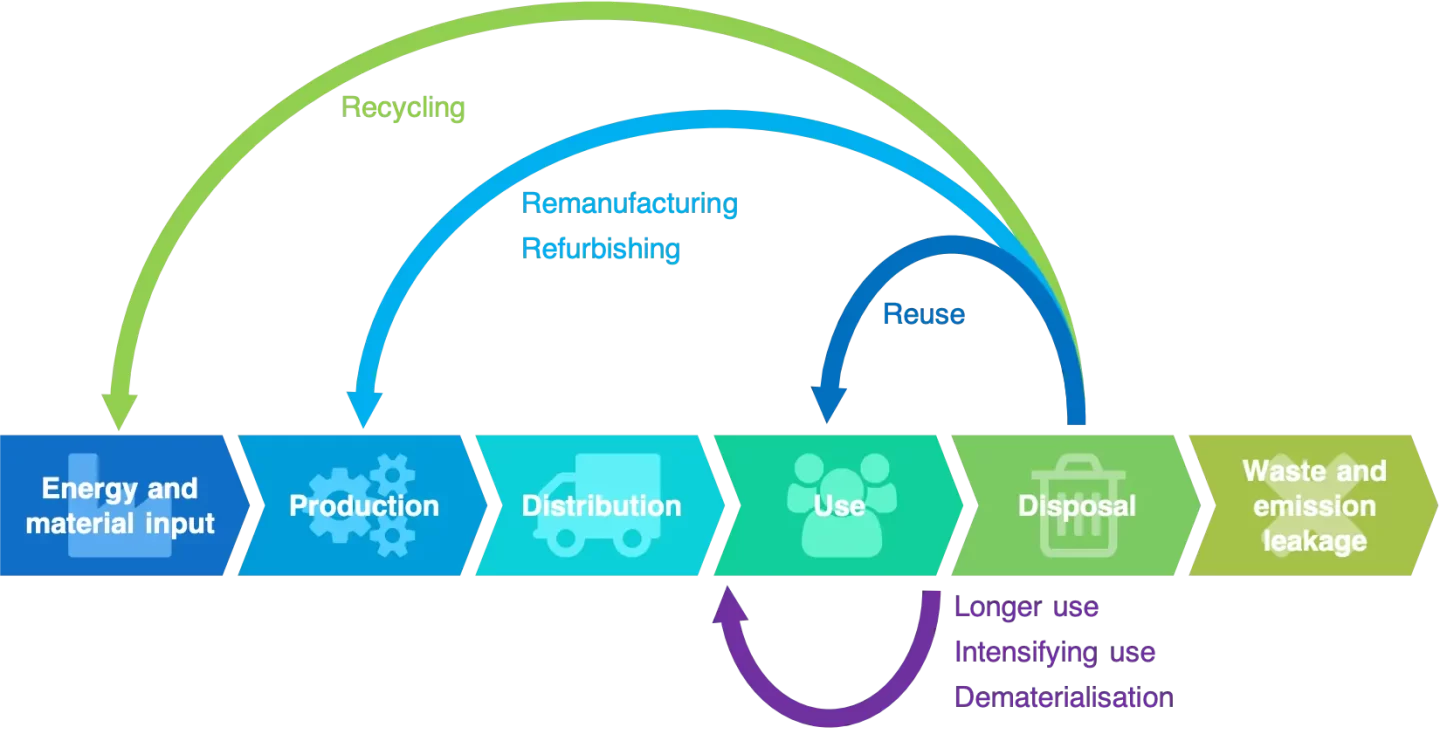What is circular economy?
Circular economy is a model that intends to extend the life cycle of the products we consume by sharing, repairing, recycling and reusing.
It contraries the linear economy model, which focuses on a “take-make-consume-throw away” pattern.

The goal is to reduce waste to a minimum following these two ways:
1) When a product’s lifecycle ends, its materials and components are placed backed into the economy when and where possible. They can be reused as part of other products.
2) Limiting planned obsolesce. Meaning, decreasing the volume of manufactured single-use products.
Adopting this kind of economy across the globe is of utmost importance.
As the world’s population grows, demand for raw material grows.
However, our supply for this material is not infinite. Thus, we need to make the most of what we are currently sourcing and be mindful of how we are using it.
Seven key points to strengthen circular economy
1. Design for the future: Circular economy thinking starts at the early stage of designing a product. Plan ahead to use fairly-sourced materials and recyclable parts. Design the product that can be used multiple times (Extended lifetime). Coordinate to manufacture the product under good working conditions and with energy efficient processes.
2. Incorporate digital technology: Optimize the supply chain and its actors. Use digital platforms to forecast demand.
3. Preserve and extend what’s already been made: Maintain, repair and reuse resources that have already been manufactures to give them a second life.
4. Prioritize regenerative resources: Use renewable, reusable, non-toxic resources and use energy in the most efficient way.
5. Use waste: Use waste streams as a source for materials to use and recycle for the manufacturing of other products.
6. Rethink the business model: Develop programs that create greater value and support circular economy. Such as leasing programs and incentive plans for reusing a products.
7. Collaborate: Partner up with members within your supply chain and members in the public sector to ensure transparency in your procedures and engage more parties into incorporating circular economy practices.
Source: Making Sense of Circular Economy



